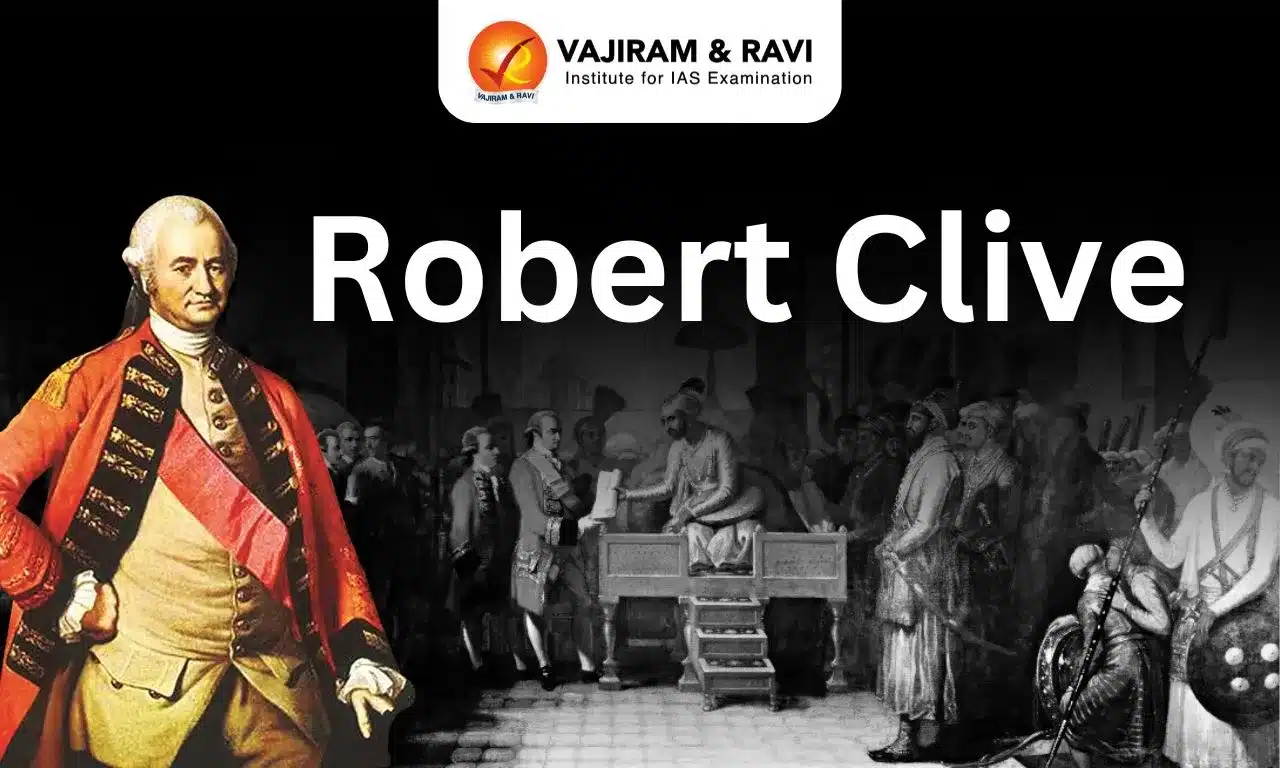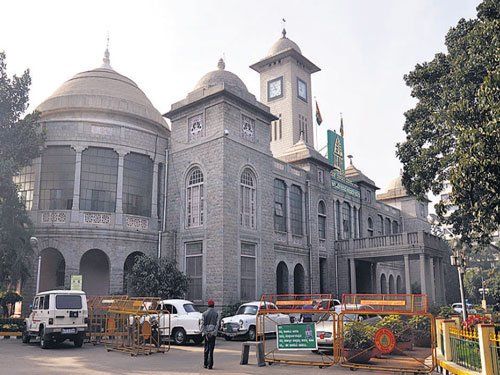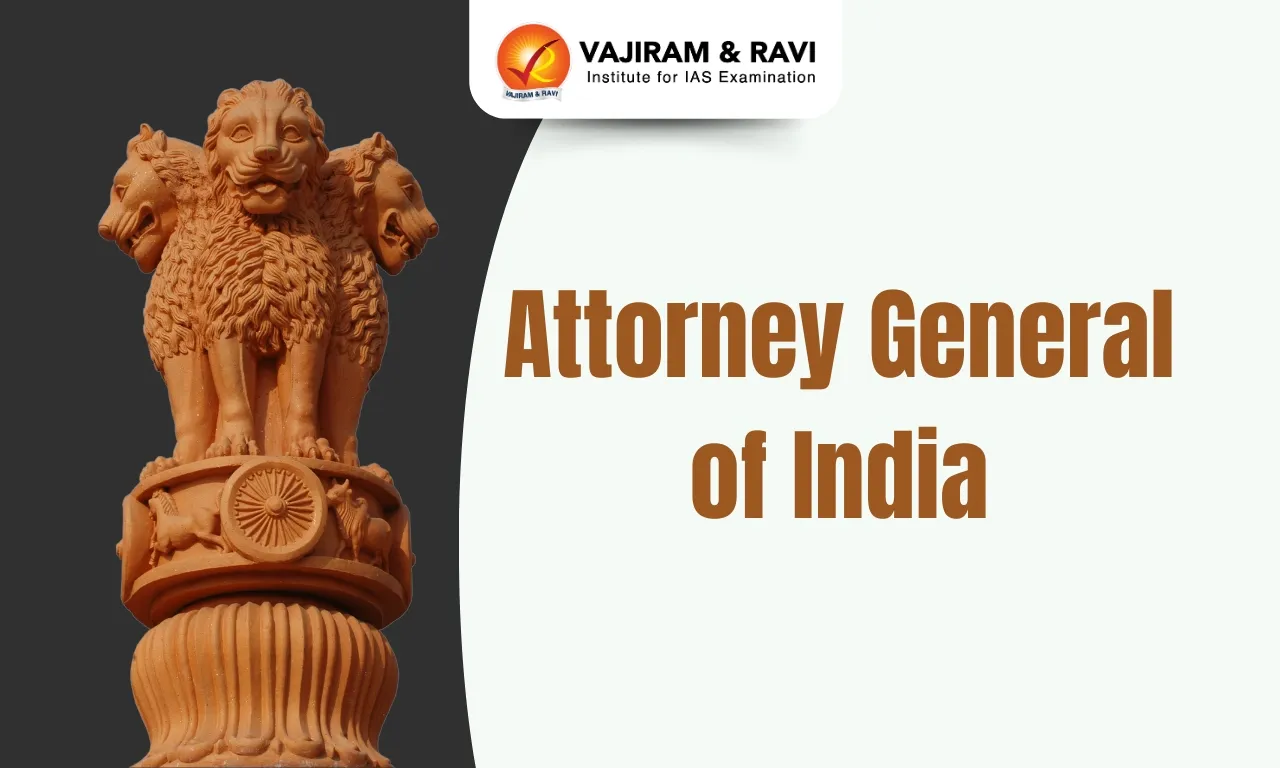Robert Clive known as "Clive of India," was instrumental in establishing British control in Bengal during the 18th century. As the first Governor of the Bengal Presidency, Robert Clive played a significant role in shaping the British East India Company’s (EIC) dominance in the region. Clive’s leadership in the 1757 Battle of Plassey was a turning point, securing British influence in Bengal.
However, his tenure was marred by criticism, particularly regarding his administration's role in the Great Bengal Famine of 1770, which caused millions of deaths.
Robert Clive Role in India
Robert Clive, the first Governor of Bengal Presidency, began his career in 1744 as a writer for the British EIC at Fort St. George in present-day Chennai. Frustrated with clerical work, he spent his free time reading extensively in the governor’s library, improving his education. However, Robert Clive’s opportunity came during the First Carnatic War, part of the European War of the Austrian Succession, where Britain and France supported rival Indian factions.
- Captured by French forces in 1746 after the fall of Madras, Clive escaped to Fort St. David in Cuddalore, where he joined the Company army and played a key role in its defence.
- His daring leadership, including the defence of Arcot in 1751 against a larger enemy force, earned him recognition as a brilliant military strategist.
- Returning to India in 1755, Robert Clive shifted his focus to Bengal, where his actions, including the decisive victory at the Battle of Plassey in 1757, cemented British control and expanded the Company’s influence amid the decline of Mughal authority.
Robert Clive Rule of Bengal
Robert Clive's rule in Bengal, during his two terms as Governor from 1757 to 1760 and again from 1765 to 1767, was marked by significant political and administrative changes that laid the foundation for British dominance in India. In 1756, Robert Clive led a relief expedition to recapture Calcutta, which he achieved in January 1757, forcing the Nawab to restore British privileges and pay compensation.
- Battle of Plassey: Robert Clive’s decisive victory at the Battle of Plassey in June 1757 established British control over Bengal, making him the region's de facto ruler.
- As a reward for supporting Mir Jafar’s ascension to the throne of Bengal, Clive was granted a jagir worth £30,000 annually (equivalent to £4.1 million in 2020).
- This sum represented the rent that the East India Company would have otherwise paid to the Nawab for a tax farming concession.
- During his first tenure as governor, he consolidated power by suppressing threats from the Mughal crown prince, defeating the Dutch at Chinsurah, and securing the Northern Circars from the French.
Robert Clive Treaty of Allahabad
Robert Clive returned to India in 1765 after the British victory at the Battle of Buxar, which solidified British dominance. In August 1765, Robert Clive brokered two key treaties at Allahabad (Treaty of Allahabad), one with Nawab Shuja-ud-Daula of Awadh and the other with Mughal Emperor Shah Alam II.
- Shuja-ud-Daula ceded territories and paid a war indemnity of Rs 50 lakh, while Shah Alam II granted the EIC the Diwani of Bengal, Bihar, and Orissa in exchange for an annual payment of Rs 26 lakh and Rs 53 lakh for Nizamat functions ( military defence, police duties, and the administration of justice).
- Robert Clive preserved Awadh as a buffer state and used the emperor’s farman to legitimize the Company's control over Bengal.
Robert Clive Dual Government
Robert Clive’s Dual System of Government, introduced after the Battle of Buxar, allowed the East India Company to control both the Diwani (revenue collection) and Nizamat (police and judicial functions) in Bengal while maintaining the façade of Mughal authority through the Nawab.
- The Company became the real ruler, exercising diwani rights as the diwan and controlling the nizamat by appointing the deputy subahdar, who acted as its proxy in maintaining law and order.
- While the Nawab retained his title and was responsible for peacekeeping, his authority was undermined as he relied entirely on the Company for military support and funds, given its control over the army and revenue.
- Despite its advantages for the Company, the dual system led to administrative chaos, neglect of public welfare, and growing discontent, which ultimately prompted Warren Hastings to abolish it in 1772.
Robert Clive Controversies
Robert Clive has been widely criticized for his policies in Bengal, particularly for their devastating social and economic consequences. His role in the Bengal Famine of 1770, which resulted in millions of deaths, remains a central point of controversy.
- Robert Clive was accused of amassing personal wealth during his tenure, leading to corruption charges in England.
- He eventually committed suicide in 1774, reportedly due to depression and public pressure.
However, Clive’s reforms to the revenue system and agricultural practices, designed to maximize profits for the East India Company, deepened poverty and worsened the suffering of Bengal’s people.
Last updated on December, 2025
→ Check out the latest UPSC Syllabus 2026 here.
→ Join Vajiram & Ravi’s Interview Guidance Programme for expert help to crack your final UPSC stage.
→ UPSC Mains Result 2025 is now out.
→ UPSC Notification 2026 is scheduled to be released on January 14, 2026.
→ UPSC Calendar 2026 is released on 15th May, 2025.
→ The UPSC Vacancy 2025 were released 1129, out of which 979 were for UPSC CSE and remaining 150 are for UPSC IFoS.
→ UPSC Prelims 2026 will be conducted on 24th May, 2026 & UPSC Mains 2026 will be conducted on 21st August 2026.
→ The UPSC Selection Process is of 3 stages-Prelims, Mains and Interview.
→ UPSC Result 2024 is released with latest UPSC Marksheet 2024. Check Now!
→ UPSC Prelims Result 2025 is out now for the CSE held on 25 May 2025.
→ UPSC Toppers List 2024 is released now. Shakti Dubey is UPSC AIR 1 2024 Topper.
→ UPSC Prelims Question Paper 2025 and Unofficial Prelims Answer Key 2025 are available now.
→ UPSC Mains Question Paper 2025 is out for Essay, GS 1, 2, 3 & GS 4.
→ UPSC Mains Indian Language Question Paper 2025 is now out.
→ UPSC Mains Optional Question Paper 2025 is now out.
→ Also check Best IAS Coaching in Delhi
Robert Clive FAQs
Q1. Who was Robert Clive?+
Q2. What role did Robert Clive play in British control over Bengal?+
Q3. What was the Dual System of Government?+
Q4. What was the Treaty of Allahabad?+
Q5. Which Battle was fought by Robert Clive?+
Tags: quest robert clive

















